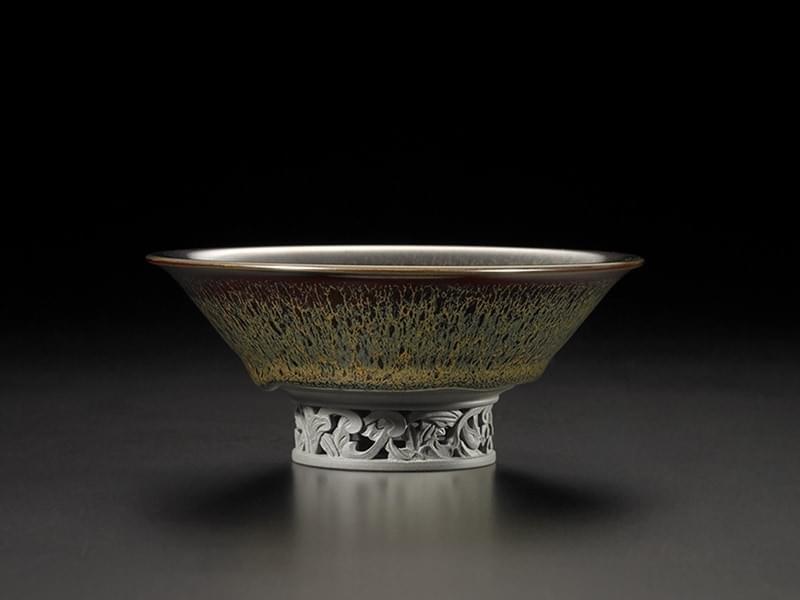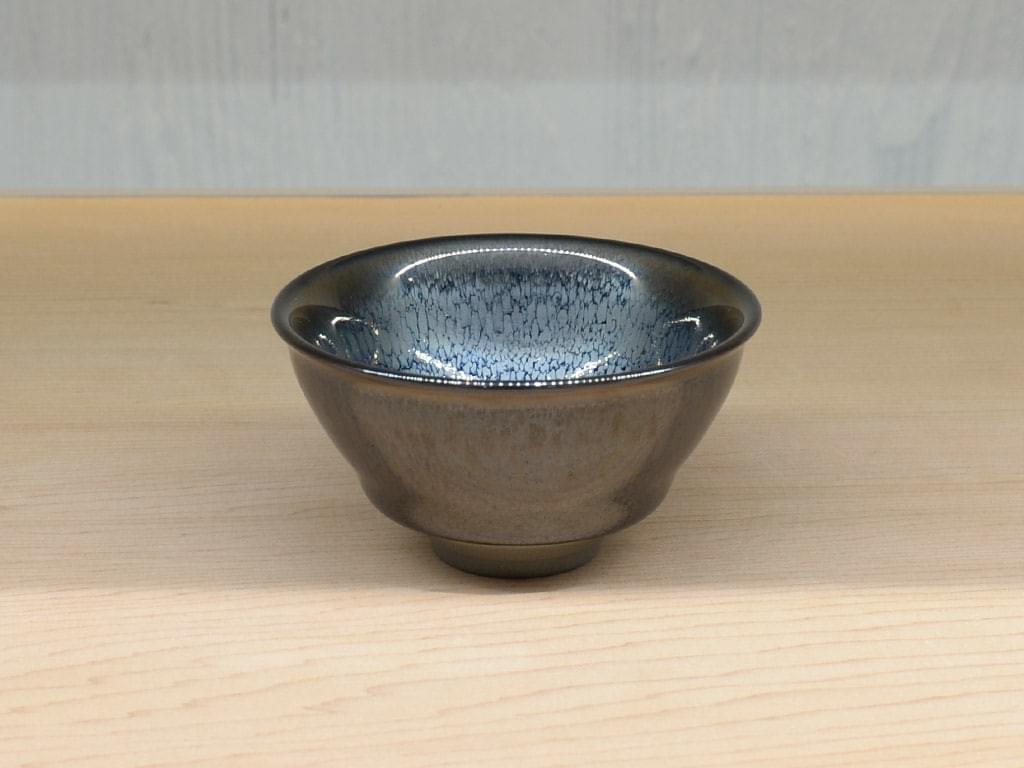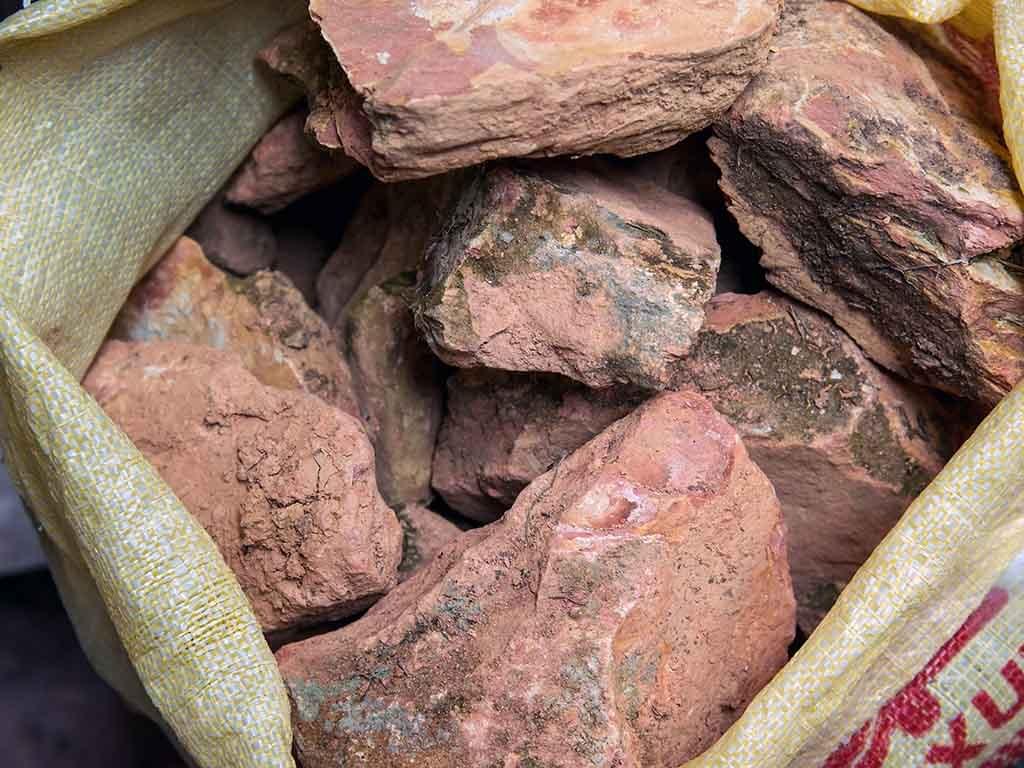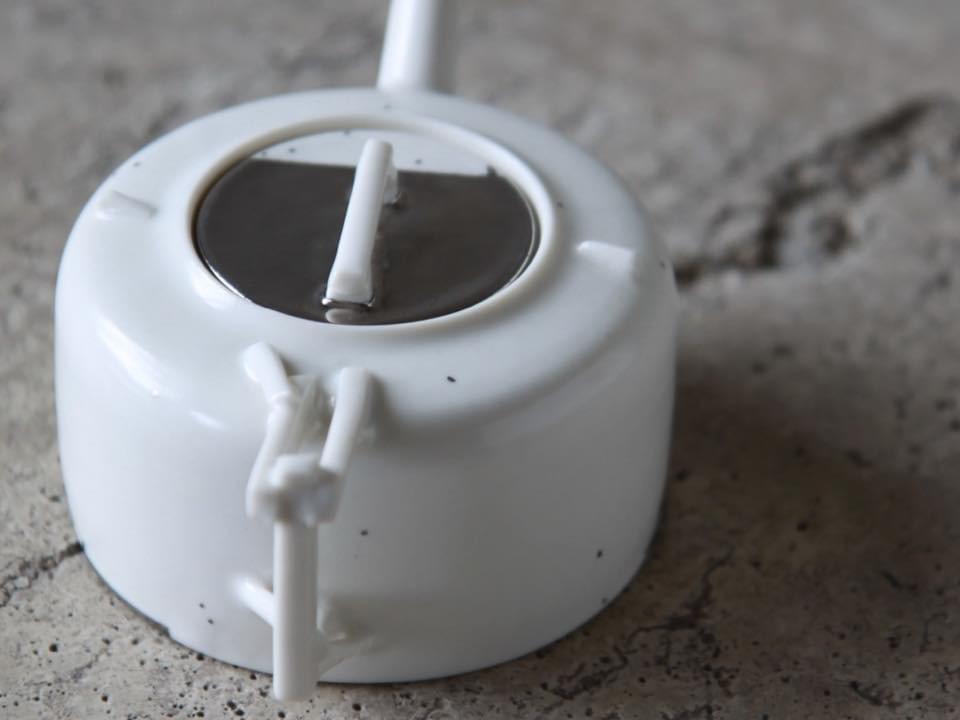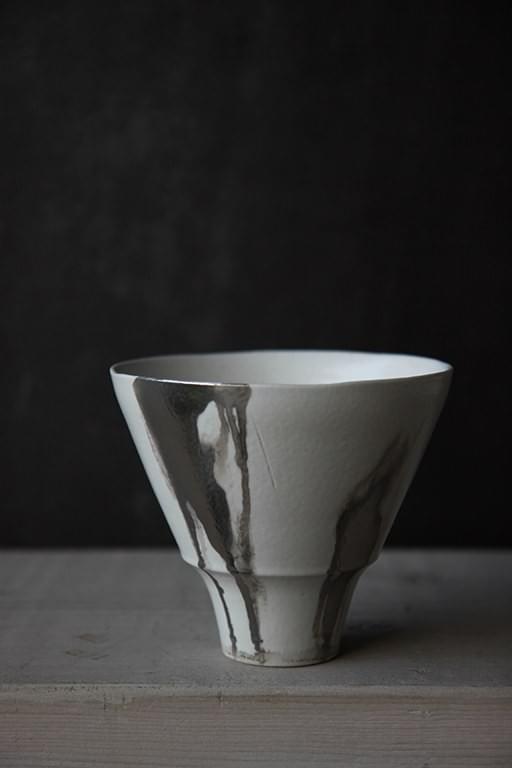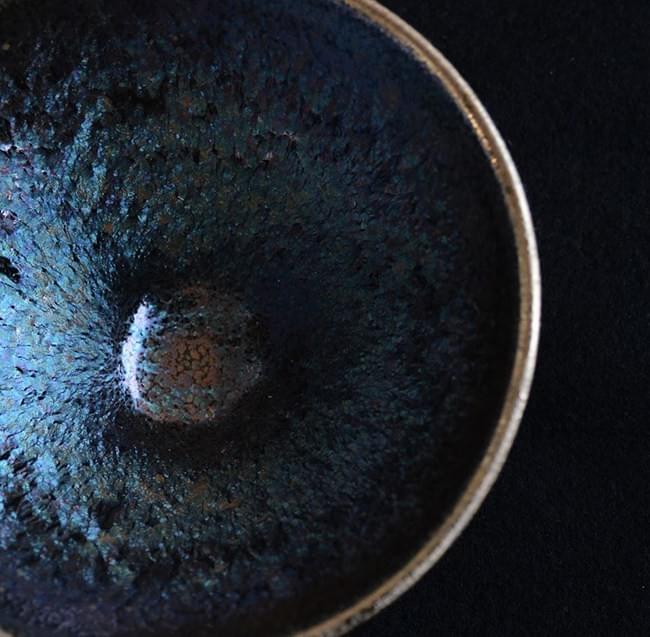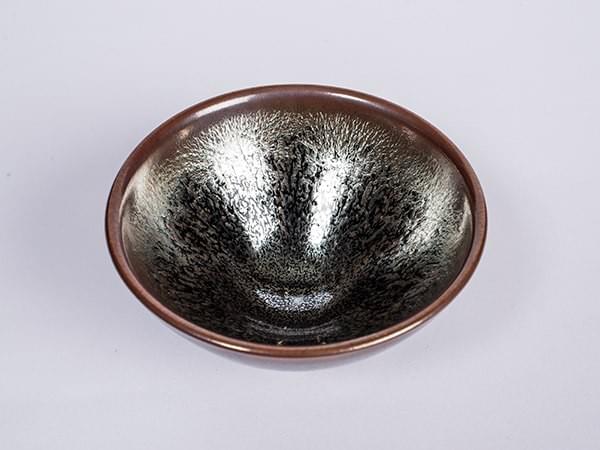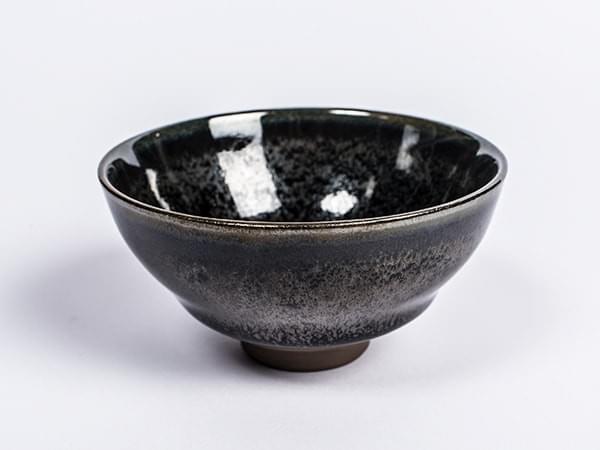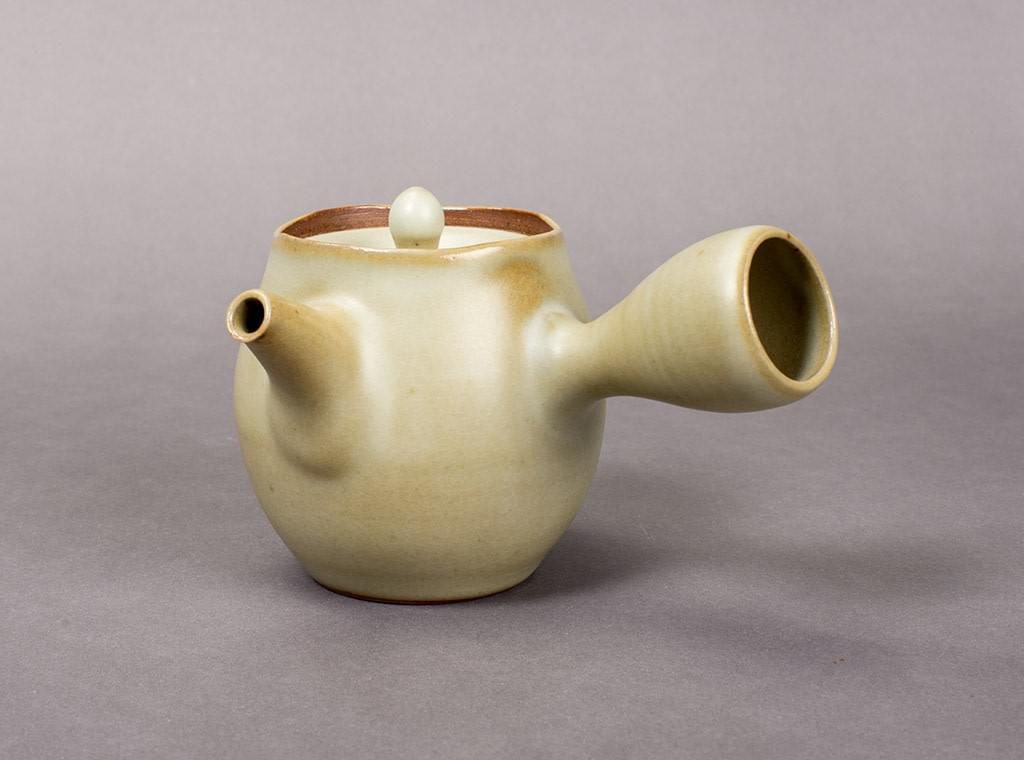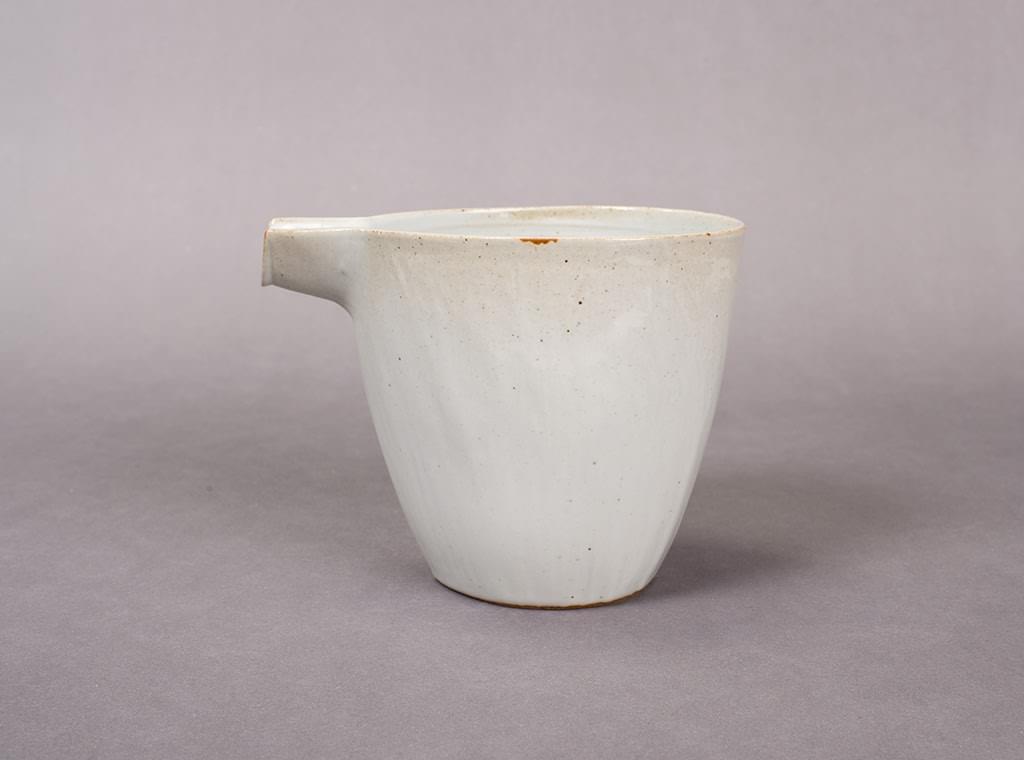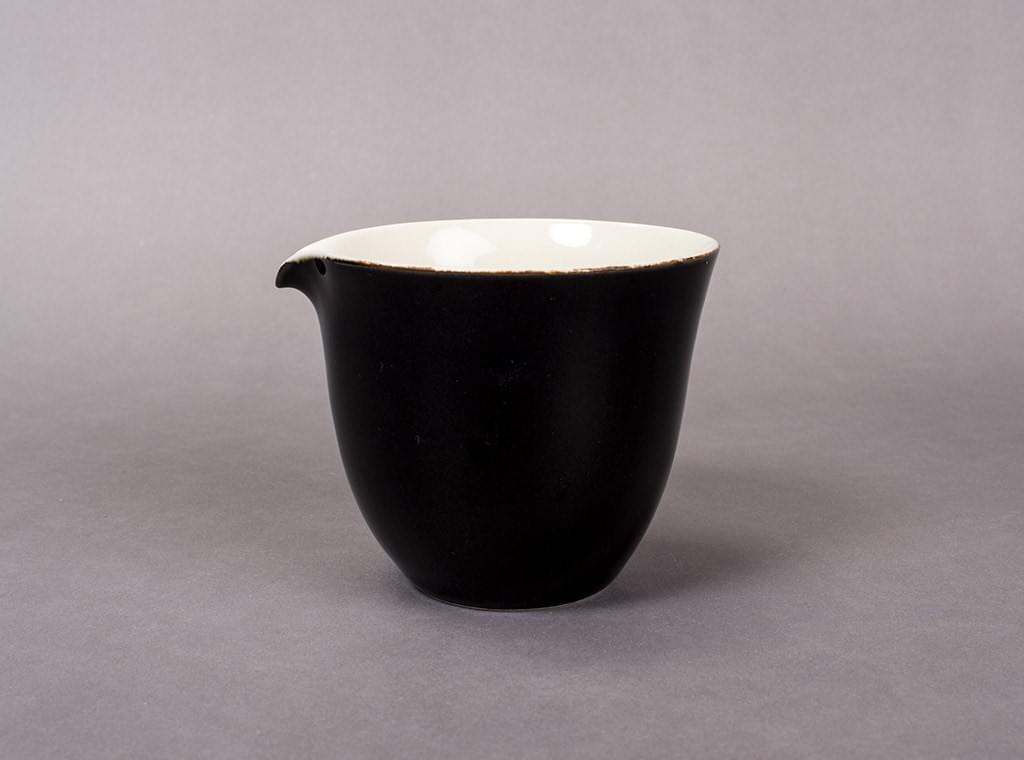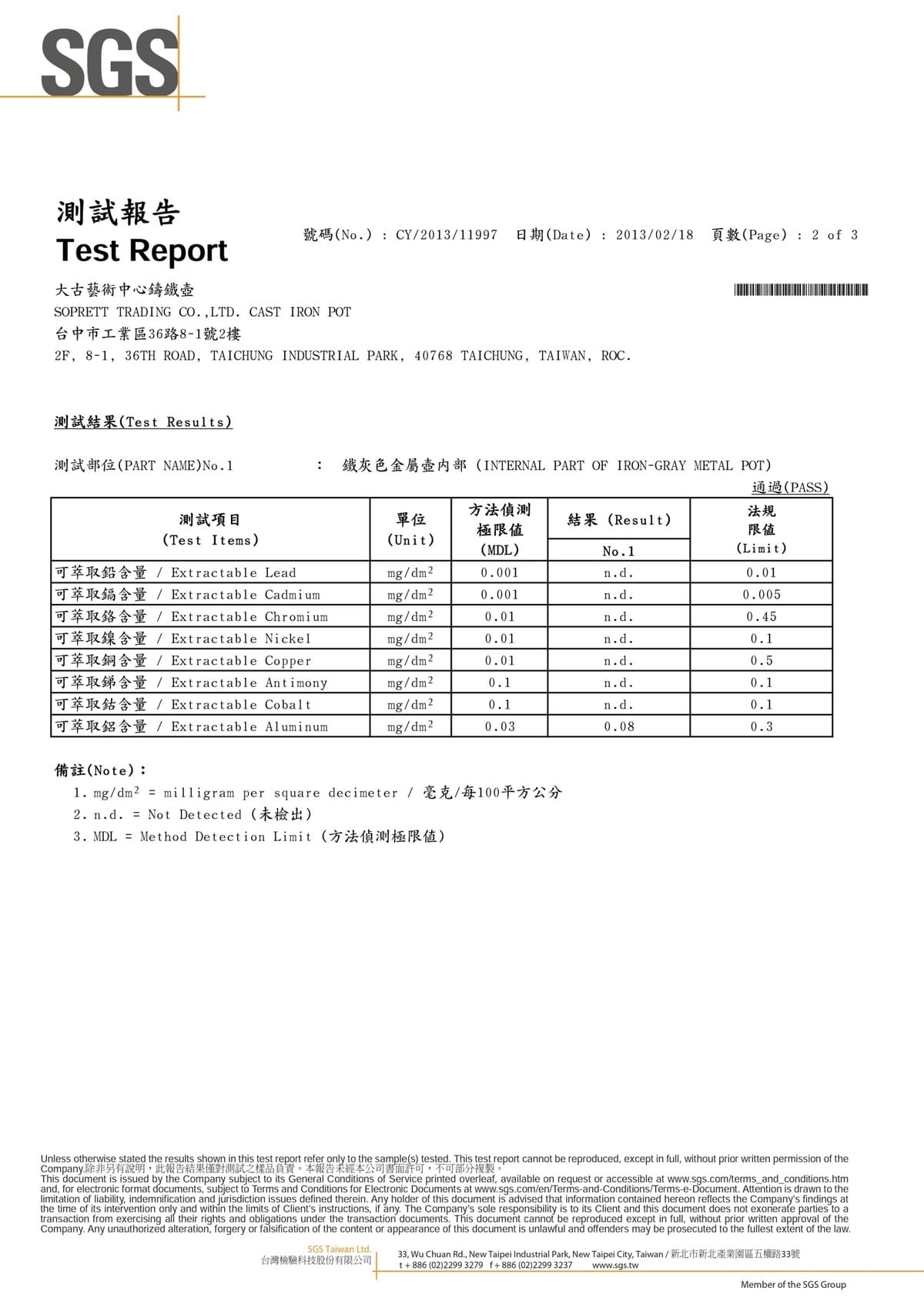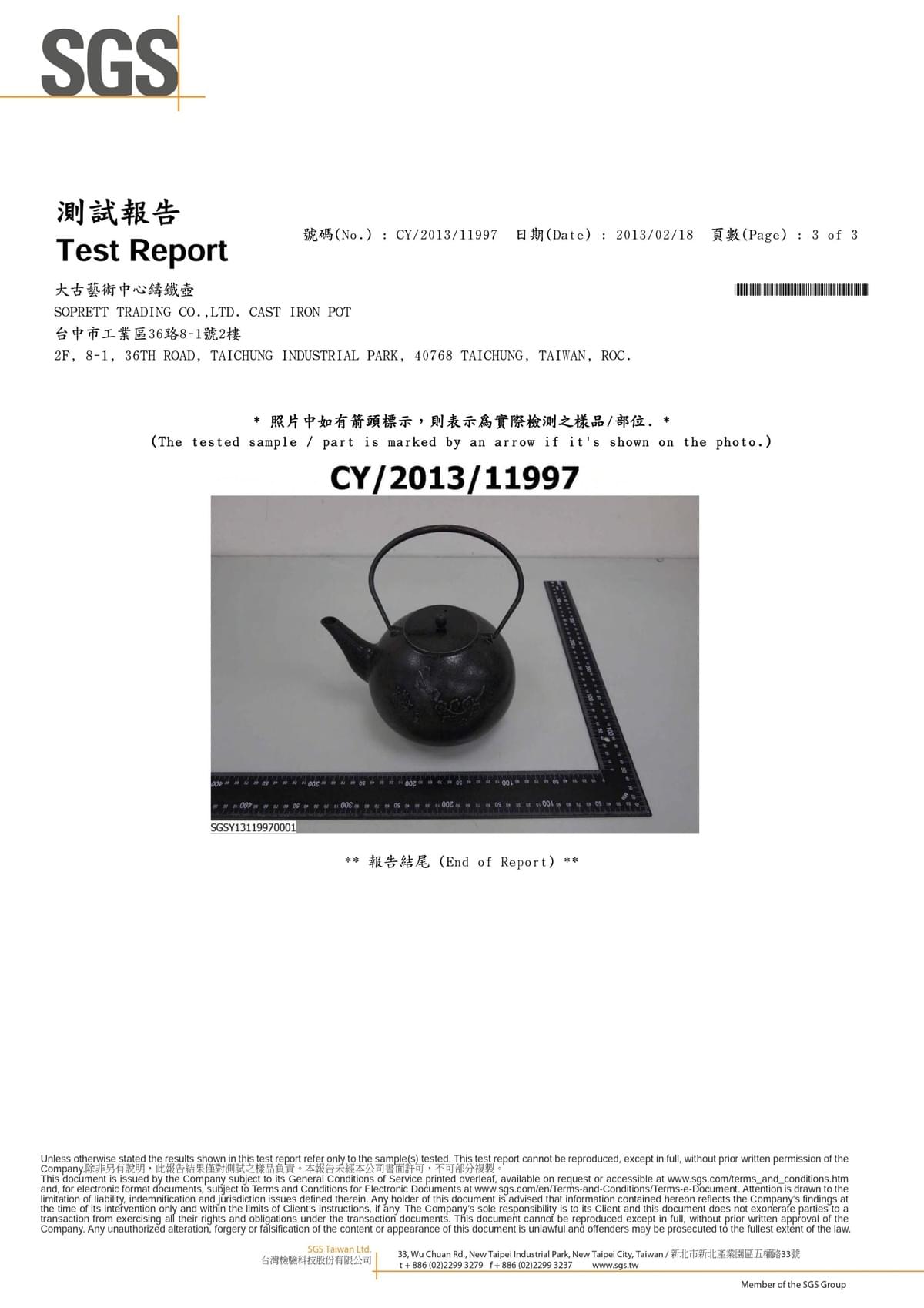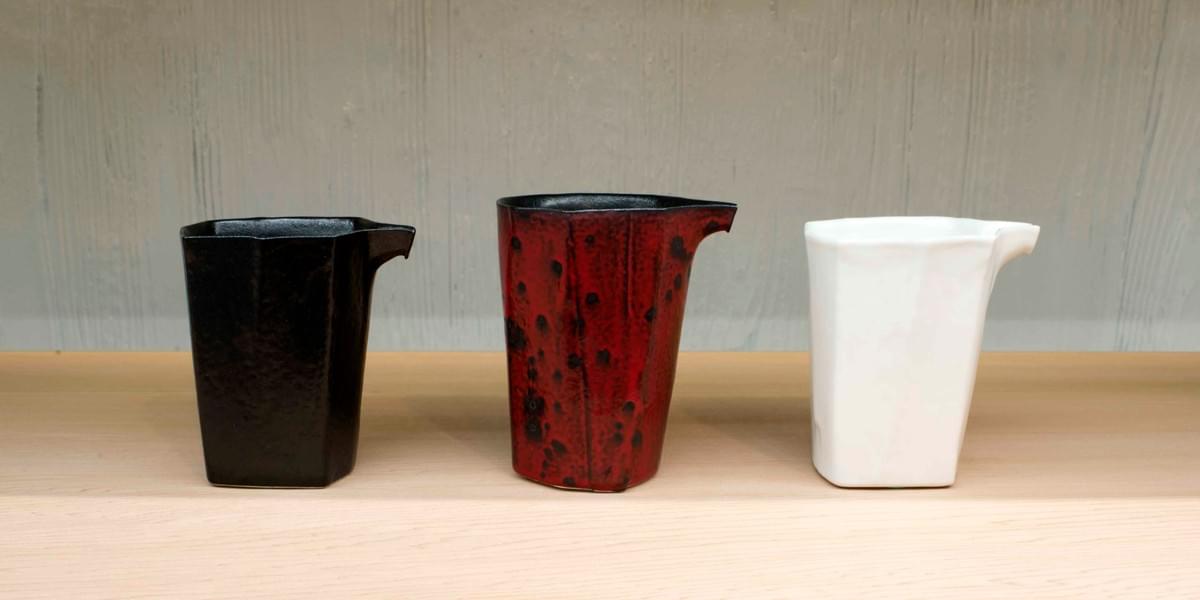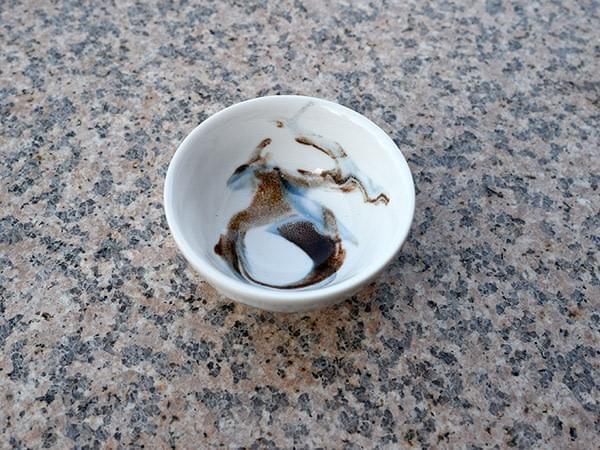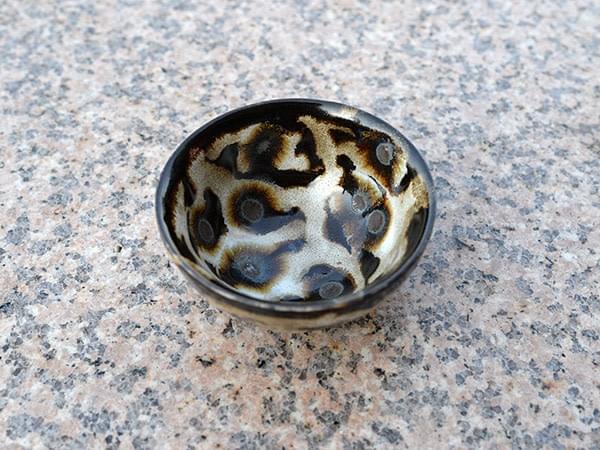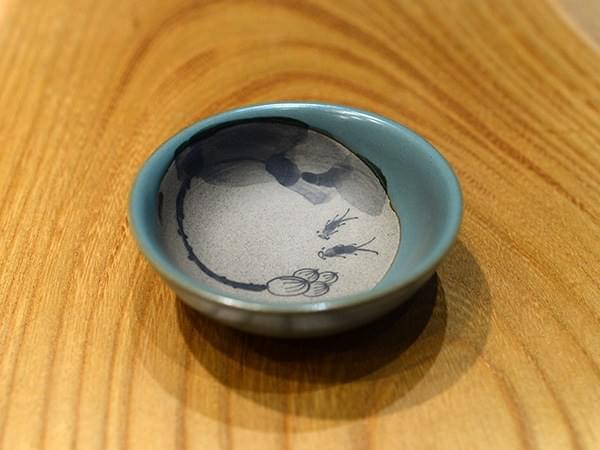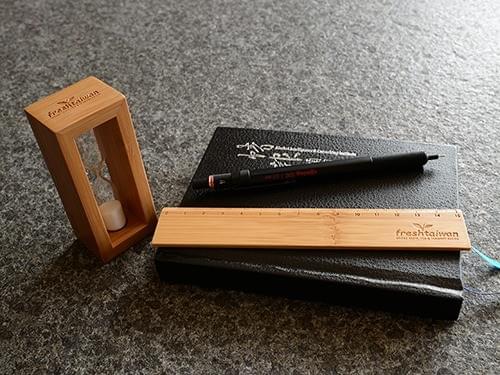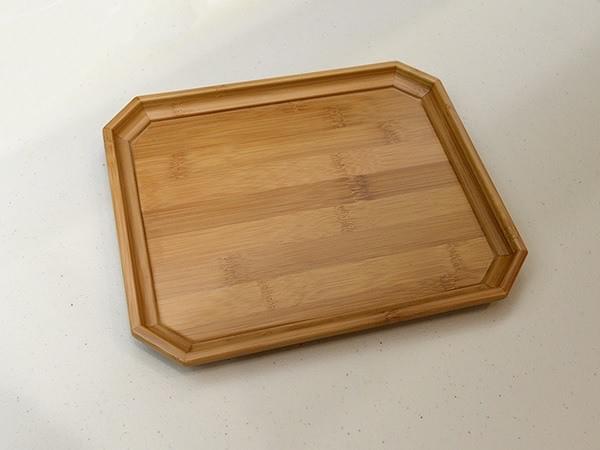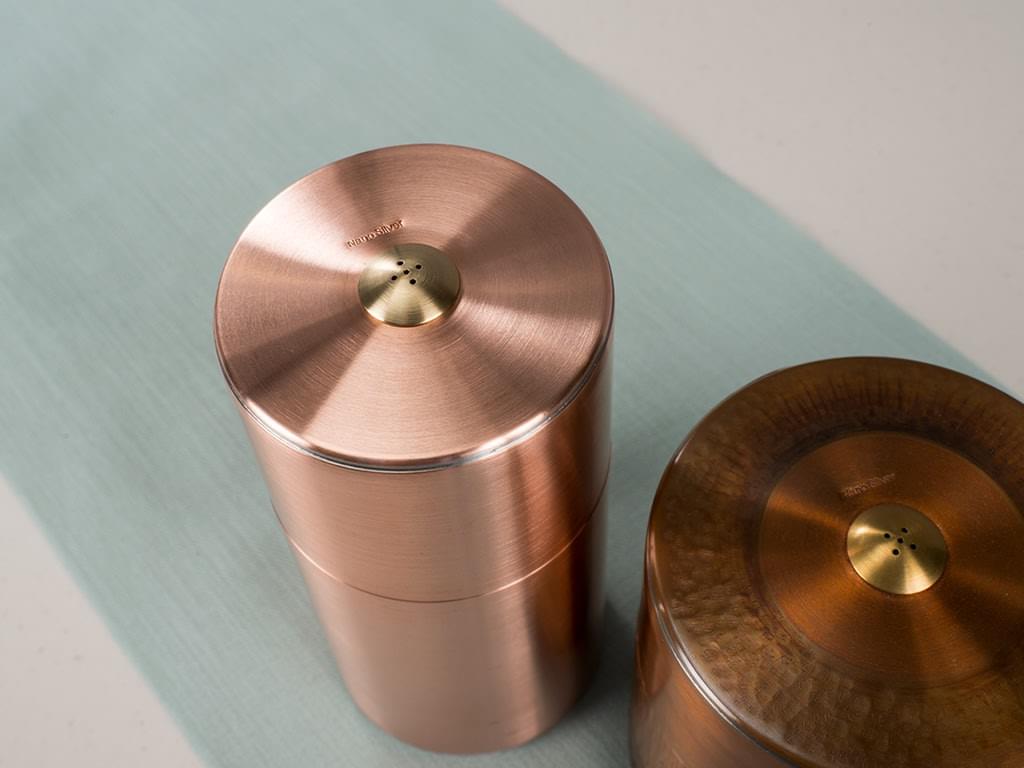
Teaware
Handmade (Hand-Thrown) Teapot, Tenmoku Tea Bowl, Cast Iron Teapot, Celadon Teacup, Accessories
Teapot, Tea Canister, Tenmoku Teabowl (Chawan)
Teapot, Teacup
Teapot
Teapot
Teapot, Tea Canister, Fairness Pitcher, Teal Bowl, Teacup
Tenmoku Tea Bowl (Chawan), Celadon Teacup
Teapot, Fairness Cup, Tea Canister, Teapot Tray, Teacup
Cast Iron Teapot
Fairness Pitcher, , Teacup, Hourglass Timer, Tea Tray ......
Tea Canister (Tea Caddy)
Yang Chin-pen 楊金本
Teapot, Tenmoku Teabowl (Chawan), Tea Canister, Tea Waste Bowl
Yang Chin-pen
1969 Born in Taipei City, Taiwan.
1993 Established personal studio.
1995 Inducted into the Taipei Outdoor Artists Association, ceramic sculpture category.
1999 Tea set Exhibition in National Dr. Sun Yat-sen Memorial Hall.
2000 The United States International Orton Ceramics Exhibition Tour.
2002 "Teapots for Lucks" invitation exhibition, Yingge Ceramics Museum.2004 Merit Award, the 2nd Taiwan Ceramics Gold Awards.
2016 Jury Recommendation Award, the 6th Taiwan International Gold Teapot Prize.
2017 Solo Ceramics Exhibition in New Taipei City Yingge Ceramics Museum.


Yang Chin-pen has studied ceramics since age 15. With type-A perfectionism, Yang’s rigorous style comes from learning to imitate the precision in ceramics. Yang nitpicks the beauty in every line, which has created lasting influences for future art.
After setting up a studio in 1993, Yang has been researching and creating Polished Vessels. Not using glaze, Yang’s pursuit of artifacts was nothing short of sheer perseverance. Yang has stuck to an ideal: “Make pots for tea, not just to make pots!” because for Yang, tea is the lead, whereas the pot is the sidekick. Making tea the centerpiece is a direction creators should consider, since putting the “flavor” outside the pot ignores the relationship between tea and vessel. Holding onto this ideal, Yang is very particular about practicality when it comes to shape and composition.

A classic and elegant shape with dynamic lettering, this teapot naturally emits lasting appeal.

A rare teapot lettered with the Heart Sutra and Great Compassion Mantra.
Good ceramics comes from more than mastering elegant lines, but from investigating the clay itself. Without glaze, clay remains a dry matte after polishing. After many attempts and failures, Yang discovered that manipulating raw materials and temperatures could beautify such defects as well as create non-glazed surfaces that wouldn’t sacrifice thickness for color. Although controlling temperatures and raw materials is enough for this method, it also unavoidably increases the risks. All the same, every time a work comes out of the kiln and Yang sees traces of creamy jade gloss, with meticulous and timeless simplicity, it’s all worth it. It’s exactly this kind of self-demand that makes Yang’s classic and gentle teapots so rare.

Pear-shaped elemental teapot, with details and a plain, natural sheen.
Many years ago, Yang Chin-pen happened upon an oil spot Tenmoku work. Attracted by its unpredictable and rich coloring, it ignited Yang’s desire of challenges and became an unspoken vow to create something with abundant and colorful glaze. In 2015, with everything in place, this lingering thought could at last come into play. “Traditional oil-spot works already aren’t can’t satisfy me. I have to challenge myself and forge on ahead.” Listening to Yang’s words, it’s not hard to understand why Yang’s hollow tall-foot tea bowl series was displayed in 2017 in the Yingge Ceramics Museum.

Yang’s hollow tall-foot Tenmoku tea bowl

Yang’s hollow short-foot Tenmoku tea bowl
The 2017 Yingge Exhibit consisted of two parts: the “Polished Vessel Series” and the “Yohen Tenmoku Series.” The “Polished Vessel Series” was mainly made up of teapots, where people could explore the sturdy and detailed teapots Yang had been creating for more than twenty years. Both the clay and form are all worth exploring, and balance both creation and classic form. The “Yohen Tenmoku Series” had a mixture of pots, bowls, containers, and hollow tall-foot tea bowls. The 2017 exhibit’s main feature was that each oil-spot high hollow tea bowl incorporated techniques like clay composition, polishing, carving, and glazing, and were all artistic and creative milestones. The glaze matched, but also contained “Dominant” and “Recessive” colors. The bowl’s interior had a hidden color, and when tea went inside, the water and light together created a new color. Another innovative detail was the extended foot which used less glaze, but more visual additions. In higher temperatures, the foot’s Tang grass engravings changed and looked like flowers holding up this exquisite bowl, making beauty blossom within the work.

Yang's Tenmoku tea canister

Yang's Tenmoku teacup

Yang's tea waste bowl (water bowl) lettered with the Heart Sutra and the Great Compassion Mantra
Yang Chin-pen’s works are well-known both in Taiwan and Mainland China. Yang still wants to keep striving, so that other areas of the world can enjoy Taiwan’s ceramics by displaying their richness and subtlety. With the Temmoku works Yang is attempting and Yang’s research and preparation with materials, Yang Chin-pen will continue to produce new creations in the future, which is something all can look forward to.
Chiu Tzu-li 丘子立
Teapot, Teacup
Chiu Tzu-li
1959 Born
1985 Involved in Yixing’s teapot business
1991 Founded his own studio1994 Selected for the Creative Modern Ceramics Exhibition
1995 The Lotus Tea Ceramics Exhibition
1995 The Yaohan Department Store Ceramics Exhibition
1996 Taiwan Regional Midlife Ceramics Exhibition
1996 Selected for the Taiwan Modern Pottery Exhibition
1997 The Yaohan Department Store Creative Ceramics Exhibition
1997 T’aolinyueh House Art Exhibition
1997 Lotus Flower Tea Pottery Art Exhibition2008 Selected for the First Golden Pot Awards Design Competition
2009 Merit Award, the Second Golden Pot Awards Design Competition

Chiu Tzu-li concentrating on making ceramics.
I love teapots, so I make teapots. It goes through certain phases, but I only make teapots that I like. There’s no pressure. If I like it, then it’s a good piece.
The story of how Chiu Tzu-li entered the world of ceramics is quite different from other artists. During 1980-1990, Chiu worked in the tea business. When he opened a teahouse, he would brew tea and chat with customers. With time, he came to better understand ceramic teapots. At the time, most good teapots came from Mainland China’s Yixing. Because both sides weren’t on good terms with each other, ceramic teapot imports from the Mainland were often unreliable. Chiu would buy ceramic teapots for his customers, but oftentimes after he’d order them, he’d never receive them, making him very frustrated.
This frustration was what ignited Chiu’s idea to make teapots himself, and so Chiu looked for a teacher to study with. After three classes, and learning the basics, he bought himself a potter’s wheel and practiced every day. After fumbling for a while, he could at last make ceramics with ease. Through his accumulated experience selling and getting to know ceramic teapots, Chiu has had clear direction right from the start, later making his unique creations, the gourd and the bamboo joint teapots, which have become Chiu’s most well-known works. Compared to traditional teapots, the designs have very distinct charms.
When it came to his gourd-shaped teapot, also called the “pu reed”, Chiu’s years of practice and experiments made his pu reed teapot appear more mellowed and mature. At the teapot market, many people enjoyed Chiu’s teapot. Oftentimes, as soon as a teapot came out his kiln, it was taken by a collector or agent, since it was a very unique and welcome addition to the market.

The gourd-shaped pu reed, with a round exterior. It was quickly welcomed by consumers.
The bamboo-joint teapot was Chiu’s other well-received work, which became a famous series because of its sense of blessing. As with work made from a potter’s wheel, Chiu made the texture of the body, handle, and knob all look like a bamboo joint, as well as making it the same color of bamboo. When holding the bamboo joint teapot to make tea, people might feel as though they’re using a teapot made of bamboo to brew tea, giving it a unique taste.

From observing bamboo and creating an inspired bamboo joint teapot, it also maps the lifelong foundation of the country, and has become a part of the Modern Ceramics Museum collection.
Mini teapots are Chiu’s other specialties. For the most part, smaller teapots require technical skill and great care to make. Many collectors and working women tend to be quite interested in mini teapots.

Mini teapots are ideal for collectors and those taste-testing tea.
Unlike many ceramists, Chiu has always clung to the dirt’s original color. A teapot’s sheen comes from mastering the redox process. In addition, Taiwan’s native mines make for better-adjusted clay prior to being shaped. With a background in chemical engineering, Chiu paid more attention to the earth’s minerals and metals. Although trace elements, even fine-tuning them can often lead to amazing results. Fitting details and changes like handles and knobs make every one of Chiu’s teapots truly unique.

Works in process, ready for the kiln.
Ah Ming 阿銘師
Teapot
Ah Ming (Born Cheng Ming)
1995 Founded the Ming Kun Pottery Art Studio
1996 Selected for Exhibition, Fourth Provincial Handicraft Competition
1997 Selected for First Stage Exhibition, Yingge Ceramics Museum
1997 Exhibited in First Bank’s Ceramics Week
1998 Represented Taiwan in South Africa’s APSA International Biennale Ceramics Exhibition
2000 Selected for Exhibition for the Eighth Provincial Handicrafts Competition
2000 Selected for South Africa’s APSA International Biennale Ceramics Exhibition
2001 Invited to Participate in the “Hundred Pots” Yingge Ceramics Museum Carnival
2001 Interviewed for United Daily News and Central Daily News
2005 Selected for Shin Kong Mitsukoshi’s “Thousand Years of Kilns” Exhibition
2012 Interviewed for Ta Ai Cable Network’s “The Truth about Taiwan’s Masks” Report
2012 Personal interview and segment of Ta Ai Cable Network’s “Ingenuity: One Hundred Craftsmen” Report

Ceramist Ah Ming (Born Cheng Ming) is the nephew of Yingge’s famed ceramist Ah Wan. Ah Wan inherited traditional pottery skills, and it’s clear to see Ah Wan’s influence in Ah Ming’s works.
In 1965, Ah Ming was born into a well-known ceramics family, and having practiced ceramics since childhood, he founded his own studio in 1995. In pursuit of high-quality teapots, he spent seven years tracking all over Taiwan’s mountains, searching for the perfect clay. For a long time, the clay he’d bring back from the mountains wasn’t very pure or couldn’t reach the right firing temperature, and therefore couldn’t be used. He tested and cultivated high mountain soil quality for seven years, all to pursue his dream of making a high-quality teapot.
Mainly following traditional forms, every one of Ah Ming’s works are purely hand-made, and also made from raw materials. Before being fired, the clay is yellow, and after going through the hot fires of the kiln, it changes into a muddy tone. When brewing tea, this enhances the tea’s flavor.
Ah Ming's work demo for handmade teapot
YouTube Video
YOUKU Video
When Ah Ming observed that the overall shape of his parents’ ceramics didn’t change much in design, he hoped that he could make a different teapot style. Other than making his teapots better enhance tea flavors, he wanted to improve their aesthetic so that others would want to collect them. Once, after seeing a full sky of stars, Ah Ming got an idea: Why not collect stars on his teapot? Although this was a good idea, creating a full sky of tiny white stars on a teapot was not so simple, as poorly-made stars would not come through, or would easily fracture. Thus, he had to be very careful when both preparing materials and creating. It’s hard for people to keep their hands off of this starry teapot’s elegant shape and meticulous design.

A teapot with a classic shape and graceful design.

Starry Pan Pot
Like other ceramists, it’s hard for Ah Ming to avoid setbacks and frustrations. Ah Ming often goes to the mountains to get in contact with nature and quietly reflect on such shortcomings, their causes, and how to overcome them. Because of this, Ah Ming is able to endlessly search for new ideas, so that his ceramic skills can continue to flourish.
Wu Chen-ta 吳振達
Teapot
Wu Chen-ta
1970 Born in Yingge from generations of Ceramists, such as famed father, Wu Kuo-lung.
1986 Took after his father, starting his ceramics career.
1996 Established the Yi Pottery Workshop, studying and making teapots.
2003 Sun Yat-Sen Memorial Hall’s “Traditional Ceramics: Wu Kuo-lung and Chen-ta’s Father and Son’s Ceramics Exhibition”
2005 Yingge’s Master Ceramic Teaware Special Exhibition
2006 The Taiwanese Presidential Craft Research “Colors of Tea: Tea Crafts Special Exhibition”
2006 Cabinet Art Gallery’s “Interesting Voices of Tea: Tea Craft Exhibition”

Wu Chen-ta’s father was a true expert of the pottery wheel, spending his life with the art of ceramics and making pottery in Yingge for more than half a century. His eggshell thickness like pots are color saturated and light in one’s hands, demonstrating the beauty of his traditional craftmanship, as well as his well-deserved fame as a ceramics master. Wu Chen-ta inherited his father’s love of ceramics, and believes that a good work must have three qualities: skilled technique, practical value, and balanced aesthetics, while also adding innovative techniques to traditional forms to create a practical and delightful tea set.
Though always searching for those innovative touches, Wu Chen-ta hasn’t forgotten his father’s teachings. He recalls that while learning how to make a pot, his father would often remind him to never be too hasty, and that his moods could directly affect how he molded clay. Thin pottery is very impractical, and if he didn’t correctly mold the clay, then he’d never succeed. Again and again, his father would warn him to set, calm, and quiet his mind. Although Wu Chen-ta heard this when young, it wasn’t until much later when he truly understood his father’s advice and its outlook on people’s attitudes. From then on, Wu would always use this “set, calm, and quiet” mindset to create.
Wu not only studied his father’s techniques. In order to control his clay’s elements, thickness, and sintering temperature, and also to enhance the tea, he adopted his father’s devotion to clay and made it all himself. Even if it was washing mud, blending, or doing other preparations before making pottery, they all painstakingly heighten a ceramist’s experience. Although it takes a lot of time and effort, in order to guarantee a work’s uniformity, Wu Chen-ta always persists in this method to ensure the best possible work.

Materials painstakingly gathered from the mountains.

Mud after being weathered.

Debris and water mill, sieve, divider, which returns the water to create cake-like soil.

The cake-like soil must be placed in a plastic bag before being using, also called fostering earth.
Wu Chen-ta’s teapots all come in various styles. In addition to being welcomed in Taiwan, they’ve been in the Japanese market for more than 15 years, and are well-known in the Chinese Mainland market. He makes more than traditional teapots. Below are introductions to his more unique designs.

The Spring Teapot
Spring is when all kinds of trees become green, so it’s fitting to gather leaves and print their textured veins into the clay, which when put through the kiln leave their marks on a teapot. Because the leaves are at their best in the spring, Spring Pots are only made once a year in spring, and each year they are in limited supply. If you miss out, you’ll have to wait another year.

Beige Clay Teapot
The light color of Wu's Beige Clay teapot has been the main selling model to Japan in the past.

Eggshell Teapot
Following his father’s eggshell handcrafts, Wu’s Eggshell Pot is just as light and fascinating.

Natural Soil Zisha Teapot
In order to provide customers with more convenient teapots, most ceramists might add extra glaze or decorations, whereas Wu Zhenda’s Natural Soil Zisha Teapot has a meticulously-crafted surface that doesn’t add glazing. He’s faithful to the appearance of the original soil, which has placed this pot in the good graces of those preferring plain and simple products.

“Ice Mist” Zisha Teapot
When brewing tea with "Ice Mist" Zisha Teapot, steam rises out of the teapot after pouring in boiled water from top (the lid) of the teapot, which adds an interesting element to tea-drinking.
Smoke rises out of the teapot after pouring in boiled water from top.

Twisted Clay Teapot
Mixing beige clay and vermillion clay together creates a new dual-toned twisted clay pot. Every mixed effect and pattern has a distinct feel, and are unique works.

Wu Wei-cheng 吳偉承
Teapot, Tea Canister, Fairness Pitcher, Tea Bowl (Chawan), Tea Waste Bowl, Teacup
Wu Wei-cheng
1976 Born in Wu-jih Town, Taichung County
1994 Graduated from Ming Dow School of Art Design
1999 Graduated from the National Taichung School of Commercial Design
Exhibitions
2002 Solo Exhibition at the Taichung Cultural Center
2004 Solo Exhibition at the Taichung Cultural Center
2006 Solo Exhibition at the Taichung Cultural Center
2008 Art and Creation: The Exhibition of Taiwan’s Ceramics, National Art Museum of China; Ceramics and Mixed Media Special Exhibit, Ceramics Museum
2010 Taiwan Golden Ceramics Award Invitational Exhibition, Ceramics Museum
2012 Taiwan Golden Ceramics Award Invitational Exhibition, Ceramics Museum
2014 Outstanding Artist, “Transcontinental Vessel and Art” Special Exhibition, Ceramics Museum
2015 South Korea’s 2015 International Biennale
Exibition’s “True Colors: Invitational Exhibition of East Asian Traditional Ceramics”, Jingji Ceramics Museum; Taipei’s International Modern Art Fair; Kaohsiung Art Fair
Awards
1998 Preferred Artist for the Third Dadun Fine Arts Exhibition
1999 Merit Award, Taipei Ceramics Awards
2000 Selected for the Sixth Taiwan Golden Ceramics Award; Selected for the Republic of China’s International Biennale Exhibition
2001 Selected for the Taipei Ceramics Award; Preferred Artist for Nantou’s Ceramics Award
2002 Preferred Artist for Taiwan’s Golden Pottery Award
2003 Selected for South Korea’s World Ceramics Exhibition
2004 Selected for the Nanying Art Exhibition; Preferred Artist for Yushan Ceramics Award; Preferred Artist for the Dadun Ceramics Fine Art Exhibition; Considered for Taiwan’s Golden Pottery Award
2005 Selected for the Taipei Ceramics Award; Preferred Artist in Yushan Ceramics Award; Selected for the National Handicraft Award
2006 Silver Prize for Single Work, Taiwan Golden Pottery Awards
2007 Silver Prize for Collection, Taiwan Golden Pottery Awards; Silver Prize for Single Work, Taiwan Golden Pottery Awards

The first impression people have of Wu Wei-cheng is that he’s shy and soft-spoken. While chatting with others, his thoughts emerge in expressions, not words. Reflective and deliberate, his best impressions are taken from collective snapshots of moments and feelings.
Wu’s works possess an inexpressible calm, which accentuate a sense of his unfettered self within his works. His inspiration comes from nature, and he hopes that his works appear natural, fusing together nature’s philosophy, aesthetics and modern environmental awareness. Since man is an integral part of nature, his view is that man and nature must live in harmony, which has become the very life force of his art. This is what makes his pioneering works truly one of a kind.

His creative direction is mainly for practical pieces, which include tea accessories, vases, dishware, and other often-used articles. He mainly uses a pottery wheel, though occasionally uses a pottery board and lets the kiln show the results. In addition, Wu also likes to try Japanese ceramics methods introduced in magazines, as well as sketch, watercolor, ink, calligraphy, carving, photography, and woodwork skills learned as a student to create a solid foundation for his unique style.
In order to realize his artistic ideals, Wu experiments with different expressive firing methods, ultimately favoring using a gas kiln with smoke, meaning that when pottery endures high temperatures to prevent from water leakage, giving it an more ancient feel. He uses wood or charcoal for kindling, and it is this precise way of arranging his kiln and control over the firing process that ultimately brings his unique style into play. The rough or smooth texture and changing colors in his works comes from the kiln. Not only is this simple and natural, it also flows with youthful energy. His yellow, orange, white, black, and grey colors give his works life.




Wu Wei-cheng is also fascinated in African and Asian early art. He likes their simplicity, and often looks at the shape and texture of ancient Asian pottery, bronze, and iron. He believes that the most intriguing kind of beauty is the kind that doesn’t require much change. His love of modern architecture has also found its way into his art. Wu Wei-cheng is interested in all kinds of aesthetics, and modern architecture is one of the most important elements in his works, each part simplified, exaggerated, or reorganized to fuse his own imagination into each piece and make a new aesthetic. He expresses this by observing the world’s own beauty, tailoring it into his works. In addition, his interest in every element of machinery, even the old and rusty, lends itself to this aesthetic. Following the demands of practical life, he works along simple lines of thoughts and elements to pursue all kinds of possibilities.

With a traditional fairness pitcher shape, Wu’s modern pieces have completely different designs and textures.
After seeing Wu’s works, one finds Eastern aesthetics and even Japanese influences within his everyday objects. Using humanizing forms, along with a simple beauty close to people’s lives, it’s only natural that they emit an emotional beauty one might long for.
Tsai Ming-hsu 蔡明旭
Tenmoku Tea Bowl (Chawan), Celadon Teacup
Tsai Ming-hsu has eyes only for Song Dynasty Tenmoku tea bowls (Chawan). Tsai pored over their firing processes for many years and experimented until at last creating a shiny royal blue one in Tsai’s own style. This sort of Tenmoku tea bowl naturally shines blue, purple, and green (except in low lamplight); and under a flashlight, you can see more details and changing colors, making this Tenmoku tea bowl very unique.

The unconventional royal blue Tenmoku tea bowl.

This Tenmoku tea bowl started as a post on Tsai Ming-hsu’s Facebook page, and quickly attracted the attention of ceramists from all over the world. Although not good at English, Tsai used accepted friend requests in Spanish and Arabic. With this one work, Tsai was able to attract the attention and prase of ceramists from that many countries, a feat few can accomplish.
Aside from Tenmoku tea bowls, Tsai Ming-hsu also makes Tenmoku cups, using Tsai’s own glazing and firing techniques to continue experimenting. Presently, Tsai has the golden rose cup, the thick-glaze black-silver cup, and the very optical bold silver cup. In the future, Tsai will continue to put forth more unique works.

The rare golden rose Tenmoku cup, an unconventional and gorgeous work.


When tea is inside the bold silver Tenmoku cup, the tea bowl seems most pristine.

The thick-glaze black-silver Tenmoku cup is adored by many tea-lovers.

Tsai's matte glazed celadon teacup

Tsai's shinning glazed celadon teacup
Bai Sheng-yu 白勝宇
Teapot, Fairness Cup, Tea Canister, Teapot Holder, Teacup
Bai Sheng-yu
1988 Born
2012 Graduated from the Craft Research and Ceramics Institute
2015 The Chin-Mei Eslite Exhibition
2015 The Contemporary Tea Ceramics Exhibition
2016 The Technology and Research Center Museum Exhibition
2016 Chiou Shan Tang Solo Exhibition
2016 Selected for the Golden Pot Award
2016 Selected for the Hall of Ceramics International Design Competition
2017 Chiou Shan Tang Solo Exhibition

The young and dashing Bai Sheng-yu, known as “Da Bai,” often displays his fierce drive and creativity. From studying tea to making ceramics, he ensures that his works connect his teaware to the tea itself.
Bai Sheng-yu is young. He has come to appreciate the intimate relationship between teaware and tea through his studies of tea ceremonies, which is what inspired him to make and study teaware.
Although his ceramics career has just begun, “Da Bai” has used his youthful spirit and creativity to continue interacting with tea ceremony experts. Feedback from his tea ceremony predecessors has not only helped him perfect his works, but also given him more room to experiment and create. This path has led to Bai Sheng-yu displaying many types of works, including teapots, tea holders, pot holders, drinking cups, saucers, water bowls(tea waste bowls), and other tea accessories, giving tea-lovers more options to choose from.
Seeing Bai Sheng-yu’s works, it’s easy to see how they reflect the beauty of his experiences with tea ceremonies. Simple lines form the crux of his shapes, which are best-suited for tea-brewers during their tea get-togethers. His simple lines, shapes, and elegant coloring make it hard not to praise and admire his works. When brewing tea with his teawares, it’s clear when a creator has forged a close connection between the tea and teaware, making tea tasting and admiring teaware one and the same.

His work selected for the 2016 Golden Pot Award
Teapots made by Mr. Bai




Tea Ceremony Videos Filmed with Mr. Bai's teawares:
Tea Ceremony with Mr. Bai's Jou-hsin Series Teawares
Tea Ceremony with Mr. Bai's T'a-ku Series Teawares
Fairness Cups:



TAKU Ironware
Cast Iron Teapot
Taku Ironware is the world’s largest motorboat propellor manufacturer that SOLAS Science and Technology Corps founder Lin Yun-chin created. While SOLAS was on the world motorboat propellor market, it had 100% market shares, and up to 40% of the world speedboat propellor market shares. Their propellor products had unrivalled skills and effectiveness.

Lin Yun-chin worked in the shipbuilding industry for his dreams, and created Taku Ironware for his love.

The “dewaxing” casting method that Lin Yun-chin pioneered.
Lin Yun-chin created Taku Ironware several years ago because of his love for his wife. When his wife Tsai Chiu-ch’i saw a dentist for a toothache, the dentist recommended that she eat more things cooked on cast iron. Thus, Lin Yun-chin went to Japan in search of cast iron pots and pans, only to discover that this was a lost art, and that the pots and pans he found used sand casting, which could have the risk of crack over time. Some of them also had black coating inside, which he doubted could deflect toxins. In order to give his wife a safe pot and useable pan, Lin Yun-chin utilized his company’s equipment to develop a more refined pattern and his nontraditional “dewaxing” method to make cast-iron. “Using this method is like making a manmade artificial joint and airplane propellor. There are no airholes when pouring out the pot, and so it’s hard for it to rust. After molding it, the exterior is painted with natual lacquer to prevent rust, but the teapot interior doesn’t have any coat, and the pan interior is coated many times with flax oil. It’s not heavy, and it’s a both safe and durable.” Lin Yun-chin said.

Japanese’s favorite “Simple” pot
Non-coated pot interiors can release the ferrous ion (Fe2+) which when boiling tea, is easily absorbed into the body. Most iron found in cooking materials is ferric iron (Fe3+), which would only be absorbed into the body with an enzyme shift into the ferrous ion (Fe2+). In Japan’s “Longevity Village” where residents have preserved the use of cast iron, most elderly people don’t suffer from iron deficiency or anemia. Human bodies have about 4-5g of iron composites, which makes up 65% of hemoglobin in red blood cells. Iron atoms combine with oxygen, and when it comes to transporting oxygen, because red blood cells don’t have nuclei, they have no way of duplicating. Iron leaves the body through excrement and skin cells, with men losing about 0.001g of iron per day, women because of menstruation losing about 0.002g. Using cast iron pots and pans can help the body absorb iron.

The figurative “Chinese Feast” pot

The smooth and peaceful “Persimmon Wishes” pot
Aside from his self-created “dewaxing” method, Lin Yun-chin searched for materials to guarantee purer cast iron. He finally settled on Brazil, where the iron ore wasn’t polluted and created Taku Ironware to guarantee his customers’ health and safety. Lin Yun-chin said, “The purpose of Taku Ironware is to share love, and to love one’s self, which starts with taking care of what we eat and drink. I knew that I had created the world’s best cast iron pots and pans thus far, but I believe that all I need to do is keep benefitting others, and let that continue to be my guide.” Owing to the strict quality requirements, Taku Ironware not only meets German and European Union standards, but has also passed the International SGS Detection. The product tests showed that the products contained no lead, cadmium, chromium, nickel, copper, manganese, cobalt, aluminum, or other heavy metals or harmful elements, and won the Taiwan Award of Excellence in 2016.

SGS test report page 1

SGS test report page 2

SGS test report page 3
Cast iron teapot introduction
Emerging from the love of his wife, and growing to using his own skills, Lin Yun-chin’s Taku Ironware improves boiled water, and offers safe and healthy products. In addition, Taku Ironware strives to manifest the specialities of Taiwanese culture, thus putting cultural development at the crux of its operations, cooperating with local artist Qiu Jindan, and using rattan art to increase Taku Ironware’s elegance. This bamboo weaving demonstrates the unique beauty of Taiwanese art.

Taku Ironware's cast iron paperweight, available in different models and colors. It's a hot sale item to many foreigners.
Accessories
Fairness Pitcher, Teacup, Hourglass, Tea Tray ......
In addition to Taiwan’s hand-thrown teapots, cast-iron teapots, and other tea-brewing and water-boiling products, freshtaiwan has other useful teaware, which meet the different needs and choices for tea-lovers of all kinds.
Fairness Pitcher
To avoid soaking tea leaves for too long and letting them become bitter, those brewing tea can use a fairness pitcher (which is also called a “gong dao bei” or "fairness cup"). Pour the properly-brewed tea into fairness pitcher. If the guest has not yet finished drinking the tea in the cup, the fairness pitcher is a good temporary tool for setting aside brewed tea. The fairness pitcher has another use: tea brewers can use it to mix tea brewed sequentially to create the best cup of tea.
Whether it’s traditional porcelain or the more modern fairness pitcher, freshtaiwan has all types of convenient teaware. All are welcome to come by and have a look.

Modern & fashion type fairness pitcher
Tea Cup
From the Tenmoku Cup, Celadon Cup, leopard-print cup, modern cup, sky lantern cup, and the classic porcelain teacup, we meticulously select and prepare diverse, unique, and textured teacups for customers.

Sky blue matter glazed celadon cup

Tenmoku cup with Hare's fur pattern

Porcelain teacup with Sinoyaki like pattern

Leopard-print cup

Hand painted teacup with sky blue celadon glaze

Hand painted teacup with jade green celadon glaze
Hourglass Timer
Often forget your brewing time? Do you brew it for too long, creating bitter tea? Although electric timers are convenient, you still have to set the time, and when the time is up, the alarm can often be annoying. freshtaiwan’s bamboo-made hourglass timer has one-minute and three-minute editions. When brewing, you only have to occasionally check on it, and can chat to your heart’s content. The quiet won’t bother anyone, making this a very useful tool.

Quiet bamboo-made hourglass timer
Tea Tray
While brewing Kung fu Tea, it’s hard to avoid spilling water on the table. A tea tray is a good option to keep the table clean. You can put your teapot, fairness pitcher, teacup and other accessories on the tea tray, and any spilled water will just flow into the tea tray’s lowest layer. Everything’s in order, which means that you can just enjoy brewing tea. Taiwan’s bamboo-made tea tray is light, with fine craftmanship. This is quite rare, because once teaware is hit, it’s harmed, and so with our tea tray, you can enjoy and display your individual tea-brewing style.
High quality bamboo-made tea tray with fine craftmanship
Tea Service Tray
It’s both sanitary and convenient to use tea service trays with teacups. The bamboo-made service trays insulate heat well, and are also lovely. For many guests, it is a high-quality and convenient tool for accepting tea.

Useful bamboo-made tea service tray
Tong Cang Hao 銅倉號
Handmade Breathable Tea Canister (Tea Caddy, Chazutsu)
Embedded with nano silver technology
This innovative tea caddy is designed with a patented breathable button at the center of the top lid. This button contains a piece of nano silver fabric and another piece of material providing an anti-moisture feature. Silver has been used in health-related applications for over 100 years due to its natural antibacterial and anti-fungal properties. The nano silver particles have an extremely large surface area, increasing their contact with bacteria or fungi, and vastly improving its bactericidal and fungicidal effectiveness. The other piece of the material allows air to pass through but highly prevents moisture from passing through. With the features of anti-bacteria, anti-fungus, and anti-moisture, this tea caddy provides a very good storage environment for tea leaves, coffee beans, nuts, dried herbs, and so on.

Patented nano silver button is featured with functions of anti-bacteria, anti-moisture, and anti-mold.
Each tea caddy is composed of two layers: an inner layer of tin, and an outer layer of copper or brass. The doubled walls of metal together with the breathable nano silver button make this handmade metal caddy different from the design of traditional metal tea caddies in the market and perfect for storage. Travelling with such a tea caddy, people can enjoy drinking good tea anywhere and anytime. This tea caddy is not only a helpful teaware for people loving teas but also a nice gift for others.
Superior metalworking technique
With family metalworking tradition starting from 1950, Mr. Liu Kuo-hsin has handcrafted artisan’s tea caddies for years. Making such a kind of tea caddy is sophisticated. It involves in more than 130 steps from cutting metal to grinding, pressing, welding, and others processes to complete one caddy with good airtight and workmanship. Artistic sense of craftsman is also required to make gorgeous tea caddies. All these features make the uniqueness of “Tong Cang Hao” metal tea caddies.

From left to right: hammered pattern (dia. 60mm, capacity 75g), plain pattern (dia. 60mm, capacity 150g), hammered pattern (dia. 75mm, capacity 150g)

Left: brand new copper plain pattern (dia. 60mm, 150g) and right: copper hammered pattern (dia. 75mm, 150g) with beautiful aged color

A complete set includes tea caddy, spoon, carrying bag, and a gift wood box.
Time adding the beauty
Another fascination feature of metal tea caddy is growing beauty over time. Frequently caressing the body of a metal tea caddy with hands brings out a changing color tone on the surface through time. So a metal tea caddy not only provides utility but also delectation as it ages gracefully with ownership.

MADE IN TAIWAN
freshtaiwan offers Taiwan's quality teas, teaware and popularizes tea ceremony culture. We hope to highlight them on an international stage.
freshtaiwan © 2020








